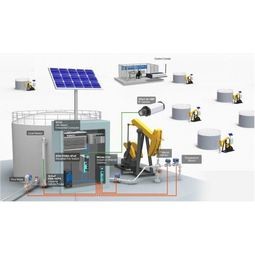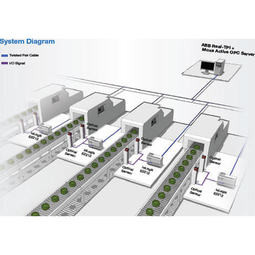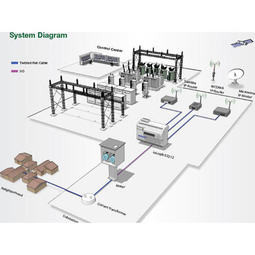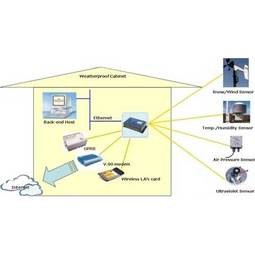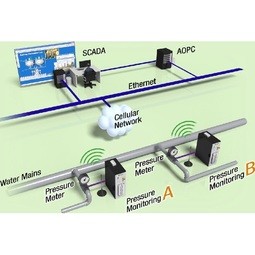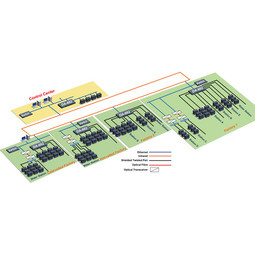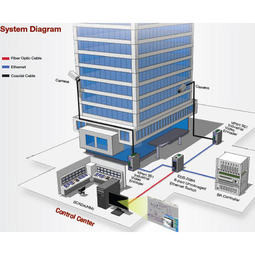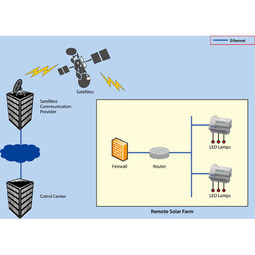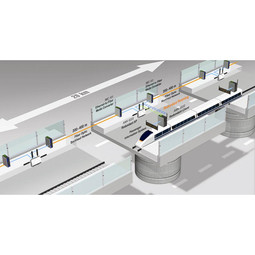Case Studies.
Our Case Study database tracks 18,927 case studies in the global enterprise technology ecosystem.
Filters allow you to explore case studies quickly and efficiently.
-
(8)
- (3)
- (3)
- (2)
- View all
-
(6)
- (2)
- (2)
- (1)
- View all
-
(2)
- (2)
-
(2)
- (2)
-
(2)
- (2)
- View all 6 Technologies
- (2)
- (1)
- (1)
- (1)
- (1)
- View all 6 Industries
- (4)
- (2)
- (2)
- (1)
- (1)
- View all 5 Functional Areas
- (2)
- (2)
- (1)
- (1)
- (1)
- View all 6 Use Cases
- (9)
Selected Filters
9 case studies
|
Remote Wellhead Monitoring
MOXA
Each wellhead was equipped with various sensors and meters that needed to be monitored and controlled from a central HMI, often miles away from the assets in the field. Redundant solar and wind generators were installed at each wellhead to support the electrical needs of the pumpstations, temperature meters, cameras, and cellular modules. In addition to asset management and remote control capabilities, data logging for remote surveillance and alarm notifications was a key demand from the customer. Terra Ferma’s solution needed to be power efficient, reliable, and capable of supporting high-bandwidth data-feeds. They needed a multi-link cellular connection to a central server that sustained reliable and redundant monitoring and control of flow meters, temperature sensors, power supply, and event-logging; including video and image files. This open-standard network needed to interface with the existing SCADA and proprietary network management software.
|
|
Improving Production Line Efficiency with Ethernet Micro RTU Controller
MOXA
Moxa was asked to provide a connectivity solution for one of the world's leading cosmetics companies. This multinational corporation, with retail presence in 130 countries, 23 global braches, and over 66,000 employees, sought to improve the efficiency of their production process by migrating from manual monitoring to an automatic productivity monitoring system. The production line was being monitored by ABB Real-TPI, a factory information system that offers data collection and analysis to improve plant efficiency. Due to software limitations, the customer needed an OPC server and a corresponding I/O solution to collect data from additional sensor devices for the Real-TPI system. The goal is to enable the factory information system to more thoroughly collect data from every corner of the production line. This will improve its ability to measure Overall Equipment Effectiveness (OEE) and translate into increased production efficiencies. System Requirements • Instant status updates while still consuming minimal bandwidth to relieve strain on limited factory networks • Interoperable with ABB Real-TPI • Small form factor appropriate for deployment where space is scarce • Remote software management and configuration to simplify operations
|
|
Wireless Automated Meter Reading for Power Distribution Networks
MOXA
In the Americas and Europe, electric power is provided by a number of private power plants distributed over wide areas. Optimizing distribution and transmission to meet market demand is always a challenge, particularly since power suppliers need to monitor data usage and combine the data for power generation, distribution, and transmission. Deploying long range wireless automated meter reading will allow power suppliers to better gauge and respond to market demand and optimally allocate energy distribution to control rising energy costs and service interruptions. The customer in this application is a cooperatively owned power services company with over $816 million in assets and nearly 4.3 million MWh in energy sales as of 2007. It supplies power and provides other management services in the western US. The company provides leadership and management of power supply options and continues to implement increasingly sophisticated power management techniques and innovative technologies, giving utilities in the region the ability to offer low-cost power options at stable prices. System Requirements • Long range wireless transmission (satellite, GPRS, WCDMA, microwave, etc.) over wide territories. • Need to transmit data in a low bandwidth network environment. • Self-monitor connection status, when the connection fails, system reboots to restore communication.
|
|
Monitoring Unmanned Weather Stations
MOXA
Unmanned weather stations play an essential role in the effort to analyze and predict the world's ever-changing weather patterns. The unmanned stations collect and store large amounts of weather data and then download the data at regular intervals to a back-end host for analysis and long-term storage. The computing device housed in the weather station must be robust enough to work continuously for long periods of time while exposed to a wide range of temperatures. It should also be able to collect readings from various sensors that use different data transmission protocols, and have the capability to store large amounts of data.
|
|
Cellular RTU for Building Beijing Water Pipeline Remote Monitoring Systems
MOXA
Water pipeline pressure needs to be kept at 0.3 Mpa in order to deliver a reliable stream of tap water to homes, businesses, and factories. Water companies use real-time monitoring systems in order to achieve consistent water pressure management that can quickly respond to any sudden drops of water pressure. System Requirements - Monitor all the distributed pressure points of a widely distributed water pipeline network - Monitor and display in real-time data from every pressure value on the central SCADA system HMI - Stable cellular communications network - High expandability
|
|
A Reliable Power Control Automation System for a Steel Factory
MOXA
One of the largest steel factories in China needed proper communication control units for data processing and protocol conversion with the devices at remote field sites. These computers would replace the IPCs and can easily create a distributed system at the front-end site with a centralized management platform at the back-end control center. This stainless steel factory has deployed a power substation system that contains several subsystems. Each subsystem uses smart meters, and needs to optimize resources, centralize management, and enhance efficiency. In addition, all distributed smart meters at the field site need to be centrally monitored and managed by a system called the “CCMS3000 central management system”, located at the control center. Each 35KV/10KV substation communicates with the back-end server via Intranet, and manages the centralized management and monitoring of the 35KV/10KV. The entire system aims to optimize the power network management and maintenance cost, enhance power distribution quality and management, and deliver real-time discovery, analysis, recording, and handling of problems. The CCMS300 central management system is expected to bring reliability to real-time monitoring of the operation status of all devices at the substations. It needs to perform several tasks, such as analyzing historical workload, power consumption, and system balance, as well as enhance system or device operation efficiency. This system includes four subsystems: Factory 1: Main Station: A communication cabinet includes a telecommunication control unit (DA-662), a switch, 2 optical transceivers, and communication units. Station C: A communication cabinet includes a serial device server (NPort 5430), an optical transceiver, and communication units. Station D: A communication cabinet includes a serial device server (NPort 5430), an optical transceiver, and communication units. The telecommunication control unit (DA-662) is responsible for collecting and controlling all data from stations A, B, C, D, E, and the water station from Factory 1. Factory 2: Main Station: A communication cabinet includes a telecommunication control unit (DA-662), and various communication units. This DA-662 is responsible for collecting and controlling all data from stations G, K, and the water station from Factory 1. Hot-rolled Factory: Main Station: A communication cabinet includes a telecommunication control unit (DA-662), a switch, an optical transceiver, and communication units. Substation: A communication cabinet includes a serial device server (NPort 5430), an optical transceiver, and communication units. The DA-662 is responsible for collecting and controlling all data from the hot-rolled factory and the hot-rolled water station. Cold-rolled Factory: Main Station: A communication cabinet includes a telecommunication control unit (DA-662), a switch, an optical transceiver, and communication units. Substation: A communication cabinet includes a serial device server (NPort 5430), an optical transceiver, and communication units. The DA-662 is responsible for collecting and controlling all data from the cold-rolled factory and the cold-rolled water station. The communication between the DA-662 and the back-end server is based on the TCP/IP IEC 106 protocol. System Requirements • Centralized and stable management platform for the distributed system • Front-end data processing for the field site devices • Protocol conversion among Modbus, DLT645, and TCP/IP IEC 104 • Redundant network architecture for continuous system operation • Easy integration with other communication system • Long MTBF to enhance system reliability
|
|
Video Networking Solution Facilitates Visual Management for Siemens DESIGO
MOXA
Incorporating video surveillance with SCADA/HMI systems is now a trend for automation applications. In general, the ActiveX Control component is required to embed video images in SCADA/HMI systems. In addition to installing the ActiveX Control components, programming is also required to properly facilitate video displays and control functions. Unfortunately, the kind of programming required can pose problems for automation system integrators because they are not familiar with video technology. Moxa is working with Siemens Taiwan Building Technologies (BT) Department to develop a userfriendly tool with graphical interface for Siemens DESIGO™ system, an up-to-date BA solution of freely programmable management and automation stations for the full spectrum of building services applications, to save time and effort with programming video related functions. System Requirements • Activate live video displays when an alarm is triggered at a remote site. • Remote PTZ camera control is required, including direction control and presets control. • Audio on/off functions
|
|
Bandwidth-Saving IO Solutions for a Solar Farm Lighting Control System
MOXA
A company in the renewable energy industry needed to find an I/O device which can operate within the demanding requirements of renewable energy systems. Renewable photovoltaic systems are one of the most sustainable and reliable energy technologies available today, and today more and more countries are deploying solar farms to harness the power of the sun to generate a clean power with low CO2 emissions. As an expert in the design, development, installation, and maintenance of photovoltaic systems since 1998, the company provides a solar farm remote monitoring service via satellite communications. However, satellite bandwidth is very limited. Their ideal I/O device must be able to operate in a low-bandwidth environment and support scheduling functions for better light management. System Requirements - I/O device that can overcome low bandwidth limitations - Scheduling function support for lighting systems - SNMP protocol support for remote device monitoring and control
|
|
WLAN Enables Constant Connectivity Between Moving Trains and Trackside
MOXA
The link between the fast-moving train and the broader fixed trackside infrastructure has always been one of the key components of a train communications network. A major rail operator in Japan sought to build a trackside infrastructure that will offer a corridor of wireless coverage on and around the track. This would give the wireless clients on the train constant high-speed connectivity to support applications both onboard and along the rail line. There are numerous issues to face before this network is ready to tackle challenging CBTC operations: - seamless roaming is needed to provide uninterrupted communications, - EMI/EMC compliance is critical to ensure that there is no system performance degradation due to harsh wayside operating conditions. System Requirements • Constant high-speed connectivity along the track • Optimized AP coverage along a 20 km route • Seamless roaming between trackside APs • Open standards secure future upgrade path • Compliant with rolling stock and trackside standards
|




